| City/Town: • Lenapah |
| Location Class: • Church • Disappearing Town • School |
| Built: • 1889 | Abandoned: • N/A |
| Status: • Abandoned • Disappearing Town |
| Photojournalist: • Emily Cowan • Barry Swanson |
See All Galleries at the End of the Article

Deemed the “Cowboy Capital of the World”, Lenapah’s history dates back to the late 1800s. In 1889 the Kansas & Arkansas Valley Railway and depot was constructed through the new townsite. The railway brought helped the townsite gain traction and was given the official name of Lenapah by resident Elizabeth Kinney. The name Lenapah comes from the word Lenápe, an adaptation of the Delaware tribe. Like many other small towns along the railroad, it was an active agricultural town, taking advantage of the easy shipping of the goods. The boom from the railroad helped the town establish its post office, which opened on April 9, 1890.
It wasn’t long before the town became a hideout spot frequented by Crawford Goldsby, more famously known as Cherokee Bill. On November 8, 1894, Cherokee Bill, along with a few other members of the gang, rode into Lenapah. There they continued what had been a long crime spree and robbed the Schufeldt & Son General Store. Ernest Meltonan, who was an innocent passerby heard the commotion and stuck his head in to see what was going on. Bill, wanting to minimize witnesses raised his rifle and shot him in the head. He escaped with $164 and continued on the run for several months before being found guilty of Ernest’s murder in 1895.
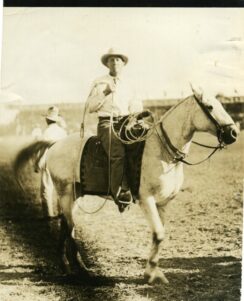
Lenapah’s population remained steady at around 340 people throughout the 1930s & 1940s as it was one of the towns theUnion Electric Railway ran through. The Union Electric system connects Lenapah to the nearby town of Nowata and other towns in Southern Kansas. The nearby towns that experienced oil-booms had little effect on Lenapah’s population and the town itself. Like many boomtowns, Lenapah shared the same fate of declining populations and businesses. As of 2002, it had three businesses including a construction firm and a retail trade establishment.
It was deemed the “Cowboy Capital of the World” due to the several World Champion cowboys the town produced throughout the decades. Those include Fred Lowry, a 6-time World Champion Seer Roper throughout 1916-29. Lowry was the first contestant to hold rodeo schools to which he charged no admission. Hard work was required at the school and Fred enjoyed watching them learn the techniques of quick horn catches. and had won the Cheyenne steer roping more times than anyone else ever has. As well as Nowata Slim Richardson who was a World Champion in 1926. Two of Fred Lowry’s students Everett Shaw and Shoat Webster following graduation went on to become World Champions just like their teacher. Everett Shaw was a 5-time champion and Shoat Webster was close behind with four champion titles, both reigned throughout 1946-1962. Lastly, Buck Rutherford, who competed in bareback riding, bull riding, saddle bronc riding and steer wrestling. He won the 1952 and 1954 championships.
St. Paul’s Baptist Church
Built: 1897 Abandoned: 2013
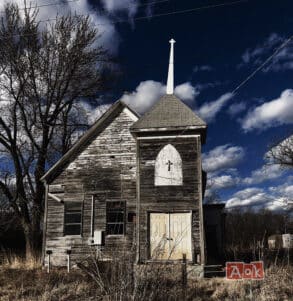
Sometime around 1913-1915, the St. Paul Baptists, a mainly African American congregation purchased the building. The sanctuary was then moved to the east side of the railroad tracks to its permanent home where it still sits today. Many improvements and renovations were made to the church being as it had sat vacant for many years which changed its appearance greatly. Owen Fauntleroy (1892-1987) told a story that as a youngster, he rode on the back end of the skid rails as the church was moved across the tracks.
The St. Paul Baptist Church remains an important establishment in Lenapah, though the congregation doesn’t meet behind its doors anymore. The last service was held there in 2013 with many old members reaping the loss of their church. After speaking to many of the locals I heard many of them recount how great Pastor James Nave was and Brother Earl Scarborough. A few years after its abandonment a handful of local kids repainted the dilapidated church to make it look a little better.
Lenapah Elementary School
Built: 1959 Abandoned: 1991
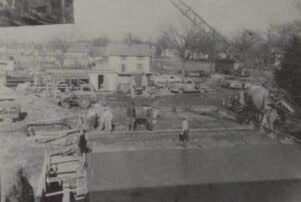
Construction started at the Lenapah Elementary School in 1958 and consists of brick and concrete, presenting itself nicely with a breezeway to the main classroom building. “When I was in the second grade, our class would watch the construction out of our music room window,” recalls Barry Swanson. What remains of it in the cafeteria, a few classrooms, and a concrete basement beneath. The concrete basement was used for several years after its closure as the only storm shelter in Lenapah but soon after electricity was cut-off and no sump-pump it soon filled with water making it an unviable shelter.
Talks started around 1988 of a major consolidation between Lenapah and three other districts, something that had never been experimented within rural Oklahoma. Lenapah, Wann, Delaware, and South Coffeyville assessed the major experiment and how it would affect the students and towns themselves. Superintendent of Lenapah, Lewis Mann Jr., and Wann Superintendent Bob Biggs pushed heavily for the consolidation. “If we left this up to our students they’d go for it in a minute,” said Mann. “We could offer so much more to our students if we worked together,” commented Biggs. Benefits to the new centralized school would be larger class sizes, more resources and better classes allowing for specialized teachers to be brought in. There was hesitation from Delaware and South Coffeyville districts about the merger, raising questions about equal representation within the new five-person appointed school board that would be created.
After the consolidation, there was some worry from the townspeople that Lenapah’s history would dissipate after the loss of their school. Lenapah Historical Society Member Barry Swanson was determined not to let that happen. He has spent nearly three decades gathering class pictures, trophies, yearbooks, newspapers, etc. for the museum there to keep the history alive. The museum is located in the 1938 WPA stone-built gym located next to the Lenapah High School.
Phillip Bierck Lumber Yard
Built: 1903 Abandoned: ~1930s
In the summer months, the brick structure at the center of town is hidden by towering trees, overgrown shrubs, and grass making it virtually impossible to spot unless you’re looking closely. But in the fall/winter season the peeled back greenery makes for a shocking discovery of a perfect shell of the once Lumber Yard building owned by Phillip Bierck. For many years townspeople and elders pondered over what the building was, most can remember it being a bare shell of bricks for all of their lives. It wasn’t until local historian Barry Swanson researched the 1900s era of Lenapah to discover what the building truly was.
In 1903, local carpenter and builder Phillip Bierck set to work on constructing a two-story brick lumber yard. Bierck was obviously a very good craftsman considering the bare bones are still standing to this date, almost as if it ready to be under construction once again. The front portion was used as office space with the back containing the lumber. He also sold windows, nails, sash, lime, and cement an all you could need carpenter shop that took care of your contracting and building as well. He constructed a shed on the property as well that would be used as a saw room to which he added an extension in 1905. Bierck was always known to be manufacturing and crafting woodwork in this shed for wagons, buggies, and businesses out of the easy-to-find hickory in the area and walnut. Numerous dwellings were built by or with materials supplied to them by Phillip Bierck. While it is unknown the exact year when this building was abandoned, a photograph featured in the local paper at the groundbreaking of the Baptist Church in 1949, shows the rock building in the background, looking the same as it does today.
To read more on Lenapah’s History with numerous historic images buy Barry Swanson’s book, Early History of Lenapah Indian Territory, Oklahoma.
Article by AOK Photojournalist Emily Cowan and Barry Swanson.
Galleries Below of Lenapah OK
Fred Lowry, photograph, Date Unknown; (https://gateway.okhistory.org/ark:/67531/metadc1594489/: accessed December 17, 2020), The Gateway to Oklahoma History, https://gateway.okhistory.org; crediting Oklahoma Historical Society.
“12 May 1916, 3 – The Topeka Plaindealer at Newspapers.com.” Newspapers.com, www.newspapers.com/image/381856417/?terms=lenapah%20baptist%20church&match=1.
“15 Sep 1916, 1 – The Topeka Plaindealer at Newspapers.com.” Newspapers.com, www.newspapers.com/image/381860182/?terms=lenapah%20baptist%20church%20topekas%20plains%20dealer&match=1.
“17 Jun 1904, 4 – The Lenapah News at Newspapers.com.” Newspapers.com, www.newspapers.com/image/606546449/?terms=phillip%20bierck%20lumber%20yard&match=1.
“18 Nov 1892, Page 6 – The Coffeyville Weekly Journal at Newspapers.com.” Newspapers.com, www.newspapers.com/image/56925108/?terms=schufeldt%2Bstore%2Blenapah.
“23 Jun 1905, 1 – The Lenapah News at Newspapers.com.” Newspapers.com, www.newspapers.com/image/606547095/?terms=phillip%20bierck%20lumber%20yard&match=1.
“27 Dec 1988, 9 – The Daily Oklahoman at Newspapers.com.” Newspapers.com, www.newspapers.com/image/452048741/?terms=lenapah%2Bhigh%2Bschool.
“6 Mar 1895, 1 – Cherokee Advocate at Newspapers.com.” Newspapers.com, www.newspapers.com/image/611420180/?terms=cherokee%20bill%20lenapah&match=1.
“7 Mar 1895, 2 – The Daily Dunklin Democrat at Newspapers.com.” Newspapers.com, www.newspapers.com/image/687214153/?terms=lenapah%20robbery&match=1.
“8 Jun 1992, 96 – The Daily Oklahoman at Newspapers.com.” Newspapers.com, www.newspapers.com/image/454456349/?terms=lenapah%2Bhigh%2Bschool.
“Hard Feelings Follow Merging of Rural Schools.” Oklahoman.com, 20 May 1990, oklahoman.com/article/2318085/hard-feelings-follow-merging-of-rural-schools.
“Lenapah | The Encyclopedia of Oklahoma History and Culture.” Oklahoma Historical Society, www.okhistory.org/publications/enc/entry.php?entry=LE013.
“Lenepah’s Lowry Dominated Roping in His Day.” Oklahoman.com, 24 Jan. 1988, oklahoman.com/article/2213417/lenepahs-lowry-dominated-roping-in-his-day.
If you wish to support our current and future work, please consider making a donation or purchasing one of our many books. Any and all donations are appreciated.
Donate to our cause Check out our books!

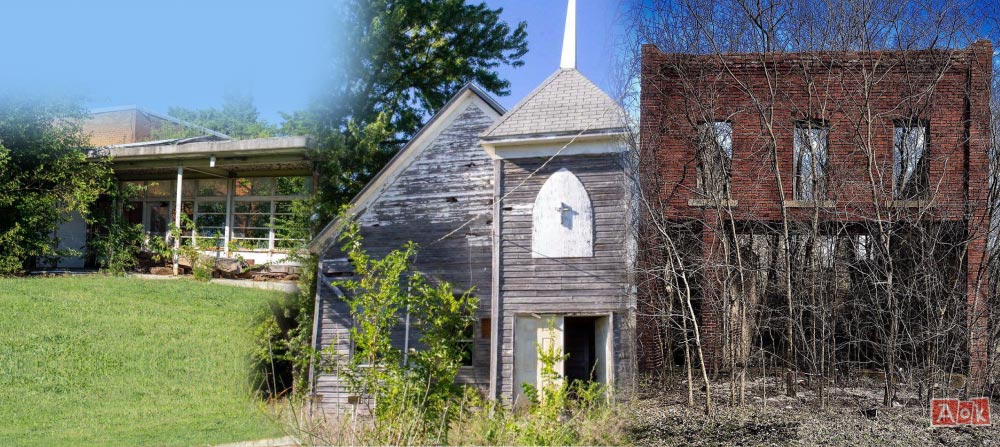
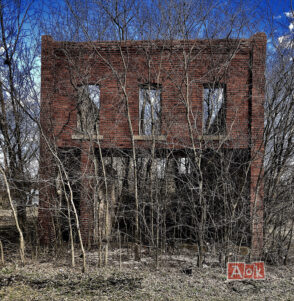



my dad Howard Vernon was born and raised here. He died last year at 83. I am so curious as to what it looks like now.
My grandparents were Faye Calico and John Robert Patchett. He grew up in Lenapah and she came with her parents as a teenager. Lived there all his life. Any photos of hardware store?
In the 1910 US Census, my grandfather, James Foster lived at 80 Osage St., Lenapah, OK with his mother, Elnora White, and his siblings. He was very young so he didn’t remember very much about his life in Lenapah. I notified on recent maps that this address and street don’t exist anymore. I am looking for any information about the Stephen Foster family, the White family, 80 Osage St, and Lenapah Indian Territory.
my grandparents and there siblings lived there (west)
My great grandparents lived in Lenapah, as did my dad. Last name Dilley. Lenapah held many great memories for my dad. So sad to know it is disappearing.
My dad, John Barker, graduated high school in 1949 from Lenapah High School. Are there any pictures of the old high school available?
I have archived as many photographs as could be found thus far. I have 3 school pictures that show John Barker, two with basketball team and with Prom friends.
Are you related to Roy Barker who lived there in 1920 (census)?
My grandfather worked for the school system first as a bus driver driving a 1923 model a school bus then as Janitor until He retired in march of1964 .
His name was Lester p.Schell his wife Lillie was a cook for the school.
My grandparents lived in Lenapah with four of their children in 1910. When they first came to Oklahoma from Chicago around 1906, they lived in Dewey. My grandfather was William James (WJ) Harrington and worked as an oil pumper and driller on others’ oil leases. They moved to Delaware, OK by 1911 where two more children were born. Eventually, he was able to become an independent oil producer and owned several small leases and the family settled in Coffeyville, KS.
My great grandad was the city marshal of Lenapah and in 1912 was left for dead on the side of the road along with 2 US Marshals and another county marshal after they tried to stop bootleggers crossing from Oklahoma to Kansas. My great grandad was the only one to survive his name was William Robert Mayfield. My name is William Robert Mayfield IV.
Also my great great grandad Michael F Mayfield lived and died there as well and is buried in Washington Cemetery. The photo at the top of this page with the men standing in front of the post office is interesting. Does anyone know who the man is to the far left with the young boy. He looks very similar to photos of my great grandad or possibly Michael Mayfield and the boy could be William Mayfield his son.
If anyone here know any more information on the Mayfield family during this time I would love to hear about it.
I am very familiar with the Mayfield name and have much information to share with you. I have newspaper accounts ranging from 1902 through 1919 (16 pages) and I also have digitized court records of all his arrests made in Lenapah. I will be glad to send you what I have.
Hey, if William Robert Mayfield was your great granddad. I believe you and i are cousins by marriage. I need help finding information on my great great aunt that married a William Robert Mayfield down there in Nowata county.
December 4, 1924 – ST PAUL’S BAPTIST ASSOCIATION – The colored Baptists of this section of Oklahoma met for the purpose of holding their Association meeting for this district of the St. Paul’s Church in Lenapah on December 26, and remained in session throughout the remainder of the month. Rev. J. W. Jones of Bartlesville was elected moderator of the Association, while Deacon Rider Vann of Lenapah was chosen Secretary. The Association was composed of ministers with on messenger from each of 15 churches in the district. The attendance was the largest in 37 years of the Association’s existence. One Saturday evening, the assembly was addressed by Mayor J. A. Kidd of Lenapah upon the subjects of missions and education. This address was followed by a sermon from Rev. G.B.S.Paul, pastor of the St. Paul’s Church. A special program was arranged for Sunday with an address by Prof. Spencer of Nowata before the morning service. At the evening service, special music was rendered by Moore’s Orchestra. During the Association an appeal for funds for missionary and educational purposes was made from which the sum of $200 was realized. Many prominent preachers attended the Association such as: Rev. A. Smith of Nowata, Rev J. E. Jarrett of Wagoner, Rev. Porter of Nowata, Rev. J. E. Roe of Bartlesville and also Rev. Perkins who is a traveling evangelist now engaged in a campaign in the State of Indiana. (Nowata Star)
I wonder what the condition of the rodeo arena is? Does anyone know
Lenapah is a disappearing town now its unfortunate knowing its grand history.
My mo was raised here and I still live here
Tragic to see a church building this way so many things could have been sold or given away.
My cousin was Buck Rutherford, his mother and my aunt lived in Lenapah by herself until the age of 99